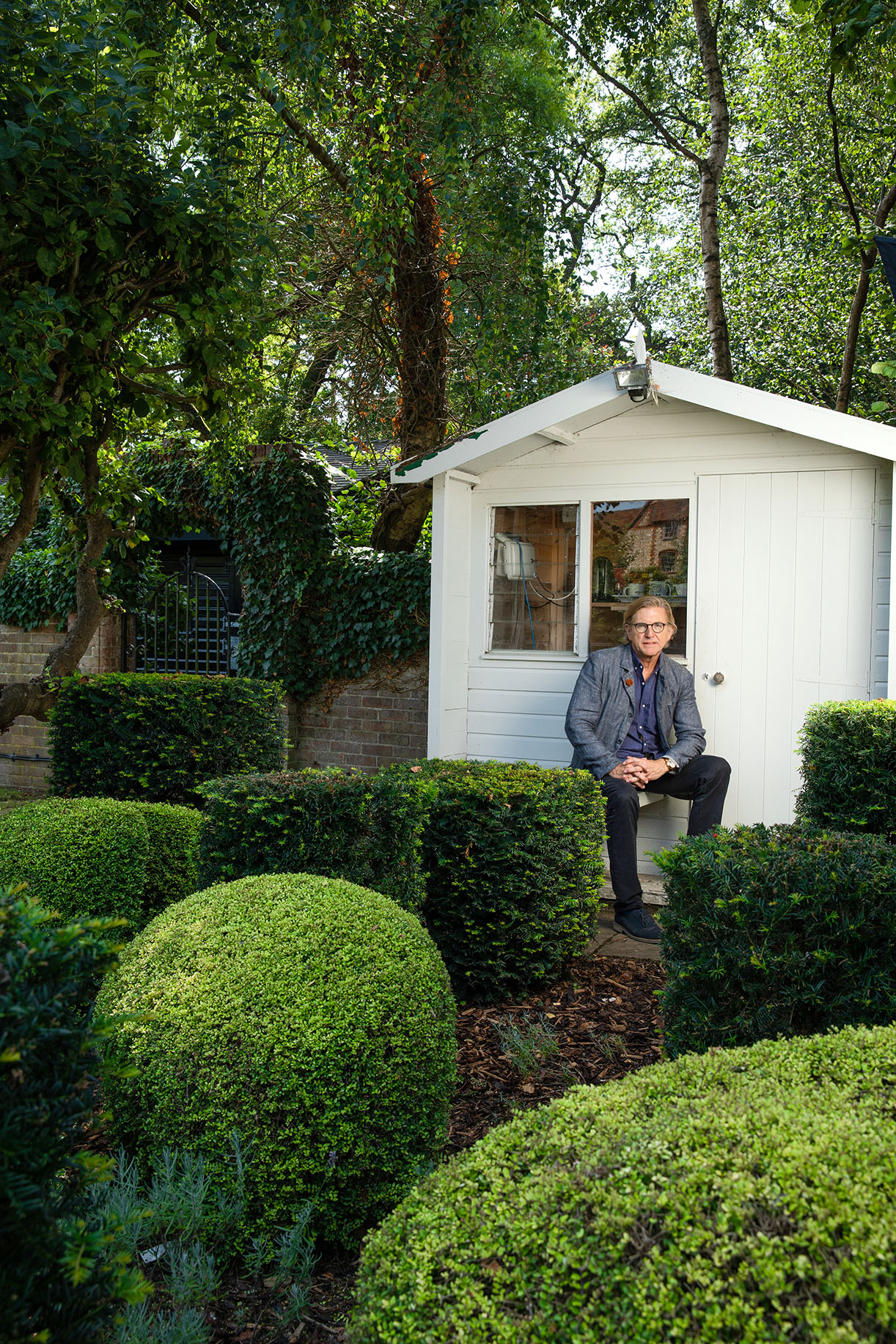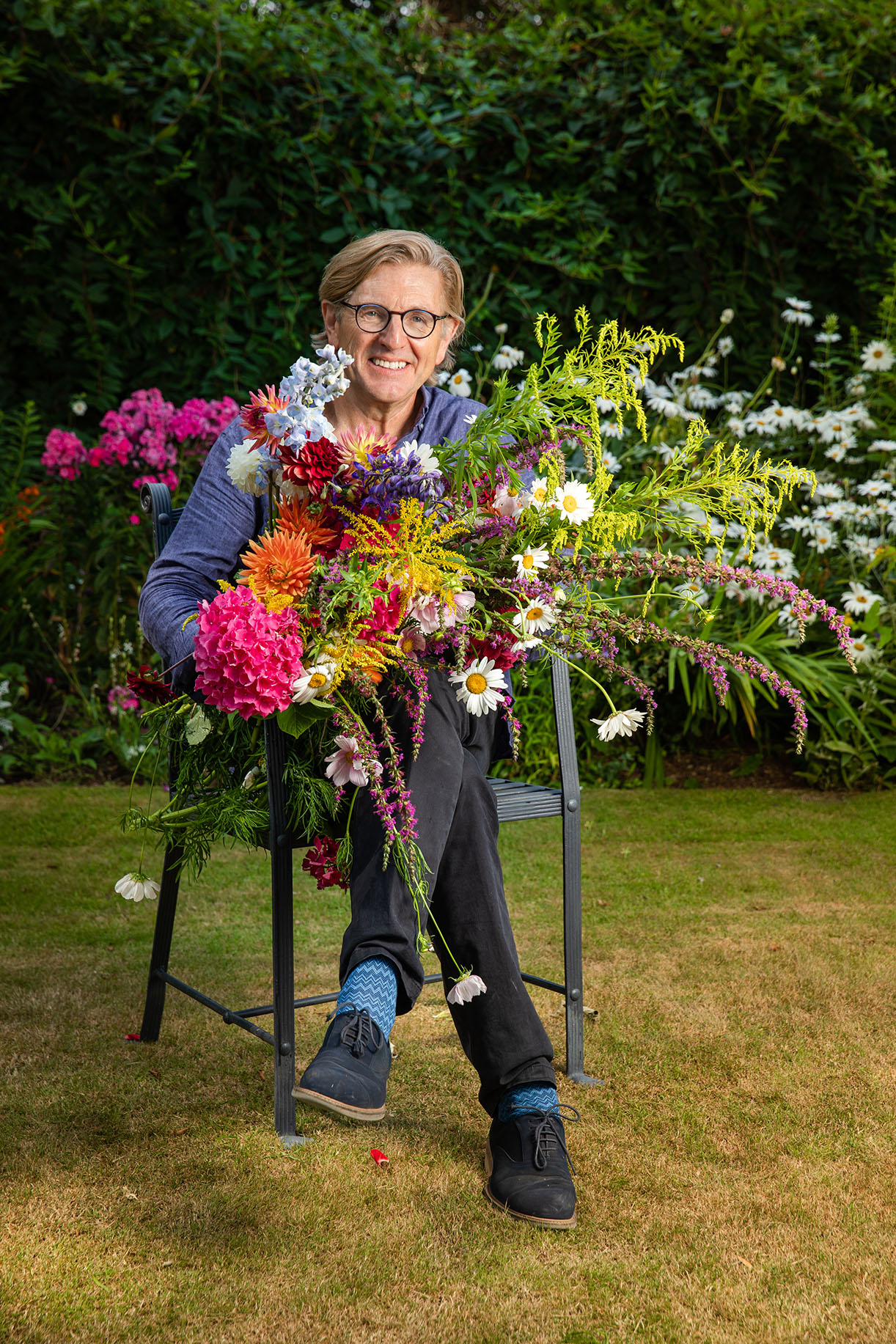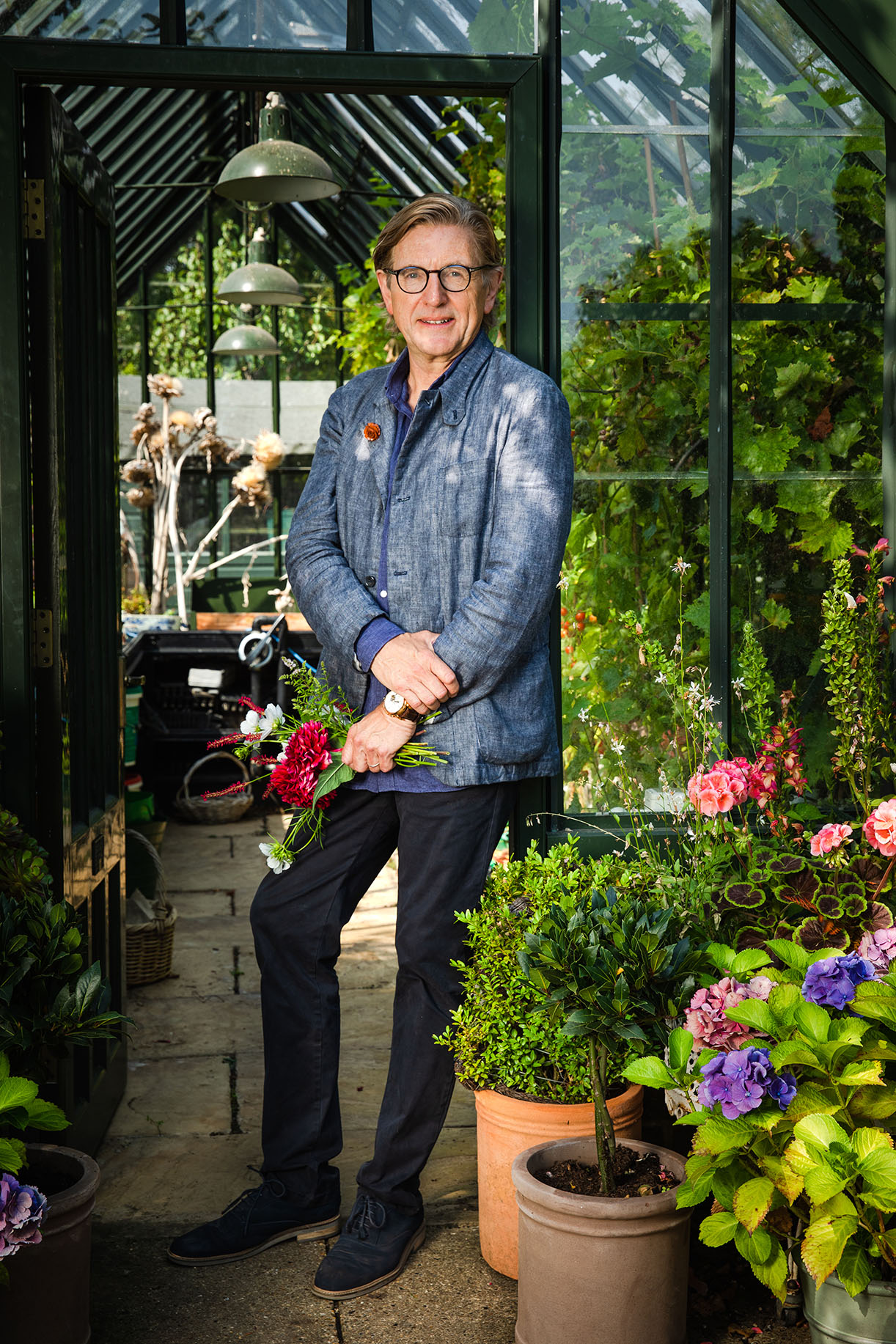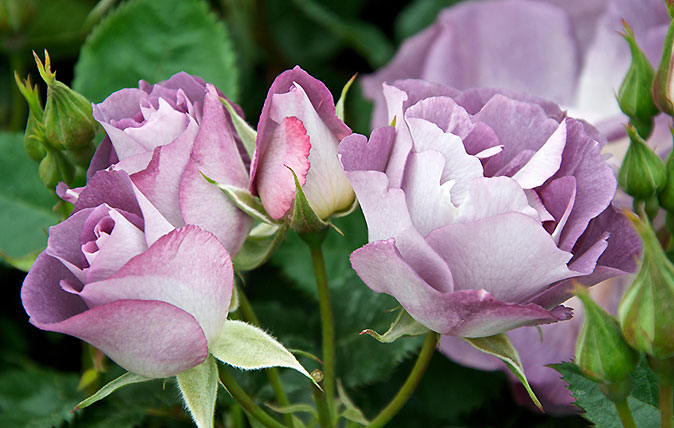Keith Weed: The new president of the RHS gives a tour of his own garden
Keith Weed, the aptly-named new president of Royal Horticultural Society, spoke to Country Life's gardens editor Tiffany Daneff about his love of plants, his new role — and showed her around his own garden.

It’s a broiling day in mid August when even the ducks on the pond look hot. Keith Weed, the newly appointed president of the Royal Horticultural Society (RHS), is out in the garden that surrounds his 15th-century timber-frame farmhouse in Surrey.
‘You’ll find him in the border,’ says his wife, Kate, an artist, who is accompanied by two border terriers, Biscuit and Bear, named — Keith tells me later — by their children, two sons and a daughter, all of whom are now grown up.
Sure enough, we discover the president crouched inside the suitably impressive herbaceous border between the cosmos and the crocosmia, obligingly clutching a vast bunch of freshly picked flowers for the Country Life photographer Dan Gould.

He certainly has the right garden for the job and, photograph taken, is touchingly enthusiastic to show off its various parts: the abstract topiary garden, the walled garden with espaliered fruits that he has trained himself, the raised vegetable beds with curled kale and onions and a large herb bed with lovage — ‘people never guess what the leaves are when I put them in a salad’ — not to mention the two beds that Kate has filched in order to grow dahlias. (She has 250 tubers, he reports.)
They are both keen growers, but they also employ a gardener — ‘essential when I was working full time’. In the greenhouse, the beefsteak and cherry tomatoes are ripe for the picking. The grapes hanging from the vines above Keith’s head, usually harvested for wine, are suffering a bad bout of mildew after the heat. ‘I was going to cut them all off before you came!’ he jokes.
This is an unusual appointment for the RHS, which tends to offer the role to one of its own, Sir Nicholas Bacon and Elizabeth Banks, the past two incumbents, being cases in point. Although Keith is a hands-on gardener — he even constructed a plywood template in order to accurately shear his yew topiary — and a member and fellow of the RHS, living around the corner from RHS Wisley in Surrey, his background is in the corporate world.

Now 59, he retired from Unilever in May 2019. He had been employed there for 36 years, having worked his way up from office trainee to board member. It was at that point he decided to assemble a portfolio of roles that would best put his expertise to use: ‘I was not interested in retiring and sitting in a deckchair.’ These include being on the board of Grange Park Opera at nearby West Horsley Place, sitting on the sustainability committees for WPP (the global advertising group) and for Sainsbury’s, as well as being a trustee of The Prince of Wales’s Business in the Community.
Sign up for the Country Life Newsletter
Exquisite houses, the beauty of Nature, and how to get the most from your life, straight to your inbox.
‘Sustainability runs through a lot of what I do,’ he says, as we sit in the shade of his modern extension overlooking a cool, blue swimming pool, which, as is everything here except for the inherited Aga, is run on power from an array of solar panels hidden behind a blackthorn hedge — planted to provide the key ingredient for sloe gin. He loves cooking, especially with his homegrown ingredients.

‘You can’t have a healthy business in an unhealthy society,’ says Keith, warming to his theme. ‘When businesses started, they were very much at the services of society. If you go back to the early days of Unilever and Lord Leverhulme, he built a village and did pensions and gave people holidays. I think that somewhere in the 1980s and 1990s, businesses generally got a bit lost in selling more stuff.’
It was, he says, the RHS that approached him, rather than the other way around. One can see why he might have appealed. As chief marketing and communications officer, he had been greeted with headline-grabbing plaudits for leading Unilever’s sustainability programme and creating its Sustainable Living Plan. Most importantly, he managed this as the company grew its profits year on year and even tripled its share price.
He has 330,000 followers on social media, too, and understands how to harness the power of digital. This fits in neatly with the direction in which the RHS wishes to travel: broadening the interest in gardening, encouraging people from all backgrounds to feel that horticulture is for them and, together with improving the environment, increasing biodiversity in the plant world.
This isn’t going to come cheap and the new president is very conscious of the £18 million loss of income to the RHS this year, following the closure of its gardens and the cancellation of all its shows. But the good news, he says, is that visitor numbers are almost back up to where they were this time last year. With the evident enthusiasm and determination he brings, Keith will doubtless succeed in his many aims and — as this is a one-day-a-week role — it should allow him more time in the garden.
A devoted visitor to Chelsea Flower Show, he bought one of the exhibits in 2019, a 10ft-high balancing-stones piece by sculptor Adrian Gray. ‘Adrian came to assemble it with a crane on the hottest day of the year last year,’ says Keith. ‘After balancing the 2½-ton stone on top of a 3½-ton stone we ended up in the swimming pool with a beer.’

The stones are the focal point of the six-acre wildflower meadow he has sown as part of the Coronation Meadows project started by Plantlife, the Wildlife Trust and the Rare Breeds Survival Trust. ‘Prince Charles personally encouraged me to make it,’ he says as we walk the mown paths.
The Prince of Wales is surely the inspiration also for the new stumpery. Keith always has two projects on the go and has been collecting suitable stumps for some time, mostly oak with some sweet chestnut, and one even found on eBay. With 40 now in his collection, he is ready to position the stumps and plant them up with ferns, hostas and ivies. Next up, the RHS.

Ultimate guide to growing roses: What to plant, where to plant it, and why you really don’t need to prune
Charles Quest-Ritson, author of the RHS Encylcopedia of Roses, tells you everything you need to know about growing roses.
-
 'To exist in this world relies on the hands of others': Roger Powell and modern British bookbinding
'To exist in this world relies on the hands of others': Roger Powell and modern British bookbindingAn exhibition on the legendary bookbinder Roger Powell reveals not only his great skill, but serves to reconnect us with the joy, power and importance of real craftsmanship.
By Hussein Kesvani
-
 Spam: The tinned meaty treat that brought a taste of the ‘hot-dog life of Hollywood’ to war-weary Britain
Spam: The tinned meaty treat that brought a taste of the ‘hot-dog life of Hollywood’ to war-weary BritainCourtesy of our ‘special relationship’ with the US, Spam was a culinary phenomenon, says Mary Greene. So much so that in 1944, London’s Simpson’s, renowned for its roast beef, was offering creamed Spam casserole instead.
By Country Life